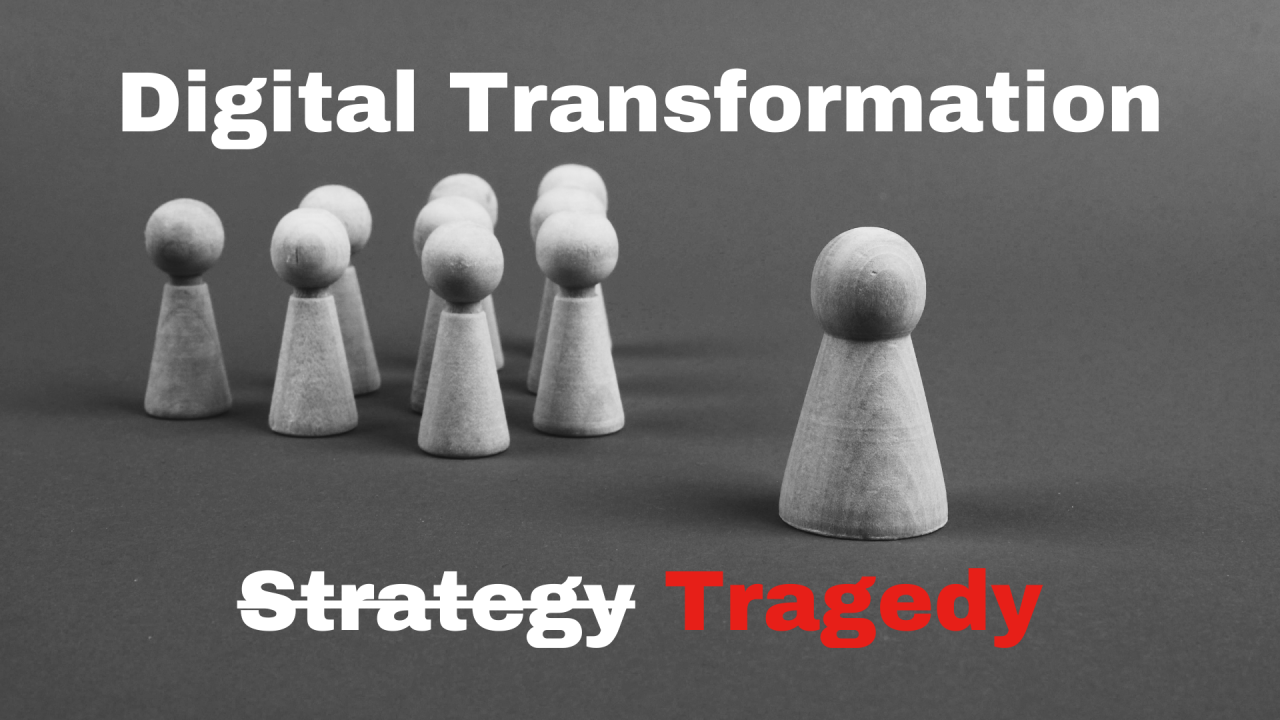Let me say it as simply as I can:
Transformation is not your problem. Velocity is.
Every leader I talk to says the same thing:
“We have a digital roadmap. But execution? It’s slow. It drags. We lose momentum.”
And in today’s world, momentum is everything.
I’ve worked with companies where transformation moved like clockwork—and others where it crawled despite best intentions. Here’s what separates the two:
1. Leadership that’s in the room, not just on the slide.
You can spot the difference in week 1.
In successful transformations, CXOs don’t just endorse the project—they own it.
They unblock things. They challenge assumptions.
They make sure transformation isn’t a side hustle—it’s the main act.
✅ What to try: Tie transformation KPIs directly to leadership scorecards. You’ll see change overnight.
From what I’ve seen lately, transformation really needs to come from the top. Leaders can’t just sign off on things and disappear—they need to stay involved from start to finish.
Think about it like renovating a house. The homeowner can’t just approve the blueprints and then show up when it’s done—they need to check in regularly, make decisions about unexpected issues, and keep the project on track.
Setting a vision isn’t enough to make transformation or disruption successful. It’s like a coach who gives a great pregame speech but then sits back and doesn’t call any plays during the game. Leaders actually need to keep checking in and staying on top of progress.
I saw this firsthand at a tech company where the CIO would join weekly standup meetings for their digital transformation project. He asked tough questions, helped remove roadblocks, and kept everyone accountable. That project succeeded while similar initiatives at other companies fell apart when executives disappeared after the kickoff.
Bottom line: if leaders want transformation to work, they need to roll up their sleeves and stay in the game.
2. Start small. Deliver fast. Prove value.
One company I worked with launched a new CX platform.
But instead of rolling it out to 500 branches at once, they did it for 8.
In 6 weeks, they had customer feedback, adoption data, and real ROI.
Momentum > perfection.
I’ve been in the trenches with big companies trying to transform digitally, and here’s what I’ve noticed: after the initial excitement of launching those first 3-4 verticals, things often stall out. The whole organization never gets transformed.
Why? It usually boils down to weak architecture, flimsy design, and inconsistent delivery.
The thing is, every single step in your digital transformation journey matters. Those “quick wins” and shortcuts might look tempting, but they’re usually a mirage. Real transformation takes thoughtful planning and execution at each stage.
3. Don’t digitize garbage. Rethink it.
Sometimes, teams spend 6 months automating a broken process.
That’s not transformation. That’s decoration.
✅ Before building anything—ask: Does this deserve to be digitized? Or redesigned?
Imagine you’re looking at your own home and thinking, “I want to change this up a bit.” Here’s the thing – sometimes when you’re considering small tweaks to your current design, it actually makes more sense to start fresh with a complete redesign.
Think about it – all those little alterations and repairs can really add up, both in time and money. You end up spending way more than you planned, dealing with endless complications, and the frustrating part? The end result rarely comes close to what you originally pictured in your mind.
It’s like when I was thinking about updating my kitchen. What started as “let’s just replace the countertops” quickly snowballed into discovering old plumbing issues, uneven flooring, and outdated electrical work. By the time I was halfway through, I realized a complete remodel would have been less headache and probably similar in cost!
Sometimes it’s just better to wipe the slate clean and build exactly what you want from the ground up. That way, you get something that actually matches your vision instead of a compromised version that still feels off.
4. Replace steering committees with squad syncs.
In traditional orgs, decisions take weeks.
In high-velocity orgs, the same decision takes 30 minutes on Slack.
The difference? Trust, empowerment, and clear roles.
✅ Give small teams a budget, a goal, and decision power. Then watch what happens.
So check this out – IDC Foundry Events India did this study that found it typically takes about 7 months to get from the initial concept to actually starting a project. And honestly, that matches exactly with my own experience trying to get projects approved within my program timelines.
The frustrating part? The committee wouldn’t budge on delivery deadlines, even knowing how long approvals take. It’s wild – some of the simplest projects never got the green light, even after the Board had already approved them!
Steering Committees can be helpful, but only when they don’t get caught up in all that bureaucratic red tape. Otherwise, your goals just stay dreams while you keep spinning your wheels trying to make progress.
5. Change management is not a slide deck
I’ve seen beautiful tech deployments flop because nobody told the frontline what’s changing and why.
Even the best tools fail without buy-in.
✅ Start communicating on day 1, not day 180. Change is emotional, not just operational.
When you’re steering big transformation projects, it’s not just about tech upgrades—it’s also about shifting culture and reworking processes. You’ve got to tackle these changes with a positive attitude.
In most companies, the IT folks aren’t just working with functional teams to design and build solutions—they’re also taking on change management. This needs to be handled strategically, making sure everyone feels included in the journey.
Based on my experience, to achieve 99% adoption and 95% project success with large transformations, you need to:
- Start with early stakeholder involvement—get key players on board from day one, not just as approvers but as active participants in the design process.
- Create a network of champions across departments who understand the benefits and can explain them in ways that make sense to their teams.
- Focus on the “what’s in it for me” factor for each user group. People adopt change when they clearly see how it makes their work better or easier.
- Use a phased approach with quick wins to build momentum and trust. Nothing convinces skeptics like seeing real success.
- Provide multiple training options—some people learn best hands-on, others prefer documentation, and some need one-on-one coaching.
- Set up robust feedback channels and actually use the input to make improvements. When people see their suggestions implemented, they become invested in the success.
- Celebrate milestones publicly and recognize contributors at all levels. This reinforces that the transformation is a shared achievement, not something being done to people.
- Plan for post-launch support that doesn’t disappear after go-live. The first few months are critical for cementing new habits.
6. Stop hiring. Start growing.
You won’t find all your future-ready talent on LinkedIn.
You’ll need to build it—internally.
Upskill. Rotate roles. Let people shadow tech teams.
✅ Create a “Talent Sprint” program—3 months of building future-ready skillsets internally.
Let’s be real – you never get everything you want in a perfect package. That’s something I’ve learned to work with over time. When I’m interviewing people, I focus on what really matters: do they understand the subject, get the core concepts, can they take coaching, and will they work well with others? Everything else? We can figure that out as we go.
In every role I’ve had, I make it a point to push my team to keep building their skills. And when they put in that effort? I make sure they get recognized for it and have chances to move up and grow.
These are just a few of the real strategies that work when theory doesn’t.
I’ll be sharing more of these—from boardroom wins to backroom fixes—in my upcoming email newsletter.
It’s built for people like you who don’t want jargon, but just stuff that works.
….One question for you before you go:
What’s slowing transformation in your organization? Culture? Tech? People? Politics?
Drop a comment—or hit reply. I’m reading.



